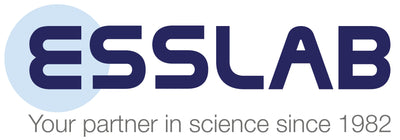Sample Preparation Guide pt18: Samples Containing Rhenium
- Home
- Sample Preparation Guide pt18: Samples Containing Rhenium
- Inorganic Ventures Tech Centre
- Sample Preparation Guide
- Sample Preparation Guide part 18 - Samples Containing Rhenium
Part 18: Samples Containing Rhenium
Overview
While preparing his periodic table, Mendeléeff found no element to occupy position 75. He therefore proposed the existence of this element and named it dvi-manganese (meaning is that it is two (dvi) positions down from a known element in the same group) and described some of its properties. Element 75, Rhenium (named after the river Rhine in Europe), was not discovered until about 55 years later in 1925 by Noddack, Tacke and Berg through its x-ray spectrum and is the last 'stable' element to be discovered.
Rhenium is an extremely rare metal that is found in Cu and Mo ores at low ppm levels. Re is rarely found in minerals at concentrations in excess of 20 ppm. Re is a silvery, white, dense metal that is similar in appearance to Pt and Ir. Chemically, Re is unlike Mn and is not found in minerals associated with Mn. Re has a high melting point (3180°C) second only to tungsten (W).
The chemistry of Re does not resemble that of any other element except Technetium which is primarily man made and will not be discussed in this series.
Sampling and Handling
The measurement of Re is uncommon and there is essentially no risk of contamination when any type of sample handling apparatus/device is used.
For additional details, see the following information on sampling and subsampling.
The Metal
The metal dissolves readily in nitric acid and is the most popular acid to use for metal dissolution:
3Re+ 7 HNO3 = 3HReO4 + 7NO + 2 H2O
The metal is slowly soluble in sulfuric acid and insoluble in HF and HCl. All modes of acid attack carry the risk of loss of some volatile perrhenic acid (HReO4). Although the literature is somewhat vague on this point, it is suggested that acid digestions be performed under reflux conditions or in closed vessels.
Metallic Re is stable in air below 1000°C. When fused with NaOH it forms a yellow melt from which Na2ReO4 may be obtained. Alkali perrhenates can be melted without decomposition. Due to potential volatility of HReO4 and Re2O7 fusion with NaOH, NaOH + Na NO3 or Na2CO3 (preferred because Pt crucibles can be used and NaNO3 can be added if a stronger oxidizing environment is needed) is common. Finally, an aqueous mixture of NaOH and H2O2 readily dissolves the metal.
Oxides, Minerals and Ores
Any rhenium material may be converted to a soluble perrhenate by fusion with Na2O2. Fusion with Na2CO3 or with Na2CO3 plus NaNO3 is about equally general as a mode of attack and has the advantage that Pt crucibles can be used.
Organic Matrices
Dry ashing of organic materials, foodstuffs, plant, and blood and sewage sludge as a preliminary decomposition step is not suggested for samples containing Re unless an alkaline reagent such as Na2CO3 is added. If ashing is used it is suggested to keep the temperature low (400 to 450 deg C max) and to use an ashing aid such as high purity sodium carbonate. If the sample is high in silica subsequent fusion of the ash with sodium carbonate is suggested. Heating of the ash to fumes with sulfuric and hydrofluoric acids to rid the sample of silica is not suggested.
For more informationon, see the portion of our Trace Analysis Guide that discusses Ashing.
Detailed Elemental Profile
Chemical compatibility, stability, preparation, and atomic spectroscopic information is available by clicking the element below. For additional elements, visit our Interactive Periodic Table.
|
-
WHAT ARE YOU LOOKING FOR?Search
- Login / Register
- Reference Materials
- Liquid Handling
- Chromatography and Spectroscopy
- Testing
- Labware
- Resources
- Wishlist (0)
- Compare (0)
- Contact Us

